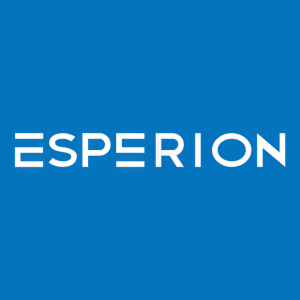Esperion EU Partner Reports Final Real-World Results from MILOS German Cohort Demonstrating Strong Increase in LDL-C Goal Achievement With Addition of Bempedoic Acid
Rhea-AI Summary
Esperion announced final 2-year follow-up data from the German cohort of the MILOS study, evaluating real-world use of bempedoic acid in patients with primary hypercholesterolemia or mixed dyslipidemia. The study showed:
- A 30.3% average relative reduction in LDL-C levels from pre-treatment to 2 years
- An increase in patients reaching LDL-C goals from 4.9% to 35.3% at 2-year follow-up
- Over 80% of patients received bempedoic acid with other lipid-lowering therapies
- Safety profile consistent with the CLEAR clinical trial program
The data demonstrates the effectiveness of bempedoic acid in real-world settings, supporting its role in helping patients achieve LDL-C goals and potentially reducing cardiovascular event risks.
Positive
- 30.3% average relative reduction in LDL-C levels from pre-treatment to 2 years
- 7-fold increase in proportion of patients achieving LDL-C goals (from 4.9% to 35.3%)
- Safety profile consistent with previous clinical trials
- Effectiveness demonstrated in real-world settings
Negative
- None.
News Market Reaction 1 Alert
On the day this news was published, ESPR gained 13.04%, reflecting a significant positive market reaction.
Data tracked by StockTitan Argus on the day of publication.
– Patients Prescribed Bempedoic Acid, As Well As Bempedoic Acid and Ezetimibe, With or Without Other Lipid Lowering Therapies, Showed A One-Third Relative Reduction in Low-Density LDL-C From Pre-Treatment To 2-Years in the MILOS Study –
– Real-World Results Demonstrated ~7-Fold Increase in Proportion of Patients Achieving LDL-C Goals When Treated With Bempedoic Acid or Bempedoic Acid and Ezetimibe –
– Data From the MILOS German Cohort Showed Bempedoic Acid, Alone or With Ezetimibe, Was Effective and Had A Safety Profile in Real-World Settings Consistent With the CLEAR Outcomes Study –
ANN ARBOR, Mich., Oct. 02, 2024 (GLOBE NEWSWIRE) -- Esperion (Nasdaq: ESPR) today announced that its European partner, Daiichi Sankyo Europe (DSE), reported final 2-year follow-up data from the German cohort of the multinational, European observational MILOS study. The European study evaluated the real-world use of bempedoic acid, marketed as NILEMDO® in the EU and bempedoic acid and ezetimibe, marketed as NUSTENDI® in the EU, in patients with primary hypercholesterolemia or mixed dyslipidemia. The products are marketed as NEXLETOL® (bempedoic acid) and NEXLIZET® (bempedoic acid and ezetimibe) in the U.S.
The results, presented in Hamburg, Germany at DGK Herztage 2024, demonstrated the effectiveness and safety profile of bempedoic acid, both alone and in combination with other lipid-lowering therapies (LLTs) in clinical practice. Raised LDL-C is a key modifiable contributor to risk of major cardiovascular events, with studies showing that every 1 mmol/L reduction in LDL-C is associated with a
The German cohort of the MILOS study comprising 973 patients from 125 sites in Germany, is one of the most comprehensive assessments of bempedoic acid in a real-world clinical setting to-date in Germany. Patients were followed-up for two years, with LDL-C levels assessed at pre-treatment, one year (1Y) and two years (2Y). Overall, 638 of 973 patients (
Additionally, the percentage of patients reaching their LDL-C goals increased from
Overall, more than
“By significantly lowering LDL-C levels toward guideline goals, we are taking a vital step in reducing the risk of cardiovascular events, which can have a profound impact on a person’s long-term health and quality of life,” said Professor Ioanna Gouni-Berthold, University of Cologne, Center for Endocrinology, Diabetes, and Preventive Medicine and Executive Board Member of the International Atherosclerosis Society, an author of the study.
“This real-world study adds to the body of clinical evidence and further underscores the therapeutic role for bempedoic acid in helping patients achieve their LDL-C goals, which is particularly important as cardiovascular disease remains the number one cause of death in Europe and the United States,” said Sheldon Koenig, President and CEO of Esperion. “We are very pleased with DSE’s continued progress and look at successes in the growing adoption of bempedoic acid in Europe and other international markets as a potential proxy for the significant market opportunity in the United States.”
INDICATION
NEXLIZET and NEXLETOL are indicated:
- The bempedoic acid component of NEXLIZET and NEXLETOL is indicated to reduce the risk of myocardial infarction and coronary revascularization in adults who are unable to take recommended statin therapy (including those not taking a statin) with:
- established cardiovascular disease (CVD), or
- at high risk for a CVD event but without established CVD.
- As an adjunct to diet:
- NEXLIZET, alone or in combination with other LDL-C lowering therapies, to reduce LDL-C in adults with primary hyperlipidemia, including HeFH.
- NEXLETOL, in combination with other LDL-C lowering therapies, or alone when concomitant LDL-C lowering therapy is not possible, to reduce LDL-C in adults with primary hyperlipidemia, including HeFH.
IMPORTANT SAFETY INFORMATION
NEXLIZET and NEXLETOL are contraindicated in patients with a prior hypersensitivity to bempedoic acid or ezetimibe or any of the excipients. Serious hypersensitivity reactions including anaphylaxis, angioedema, rash, and urticaria have been reported.
Hyperuricemia: Bempedoic acid, a component of NEXLIZET and NEXLETOL, may increase blood uric acid levels, which may lead to gout. Hyperuricemia may occur early in treatment and persist throughout treatment, returning to baseline following discontinuation of treatment. Assess uric acid levels periodically as clinically indicated. Monitor for signs and symptoms of hyperuricemia, and initiate treatment with urate-lowering drugs as appropriate.
Tendon Rupture: Bempedoic acid, a component of NEXLIZET and NEXLETOL, is associated with an increased risk of tendon rupture or injury. Tendon rupture may occur more frequently in patients over 60 years of age, in those taking corticosteroid or fluoroquinolone drugs, in patients with renal failure, and in patients with previous tendon disorders. Discontinue NEXLIZET or NEXLETOL at the first sign of tendon rupture. Consider alternative therapy in patients who have a history of tendon disorders or tendon rupture.
The most common adverse reactions in the primary hyperlipidemia trials of bempedoic acid, a component of NEXLIZET and NEXLETOL, in ≥
Adverse reactions reported in ≥
In the primary hyperlipidemia trials of NEXLIZET, the most commonly reported adverse reactions (incidence ≥
The most common adverse reactions in the cardiovascular outcomes trial for bempedoic acid, a component of NEXLIZET and NEXLETOL, at an incidence of ≥
Discontinue NEXLIZET or NEXLETOL when pregnancy is recognized unless the benefits of therapy outweigh the potential risks to the fetus. Because of the potential for serious adverse reactions in a breast-fed infant, breastfeeding is not recommended during treatment with NEXLIZET or NEXLETOL.
Report pregnancies to Esperion Therapeutics, Inc. Adverse Event reporting line at 1-833-377-7633.
Please see full Prescribing Information for NEXLIZET and NEXLETOL.
Esperion Therapeutics
At Esperion, we discover, develop, and commercialize innovative medicines to help improve outcomes for patients with or at risk for cardiovascular and cardiometabolic diseases. The status quo is not meeting the health needs of millions of people with high cholesterol – that is why our team of passionate industry leaders is breaking through the barriers that prevent patients from reaching their goals. Providers are moving toward reducing LDL-cholesterol levels as low as possible, as soon as possible; we provide the next steps to help get patients there. Because when it comes to high cholesterol, getting to goal is not optional. It is our life’s work. For more information, visit esperion.com and esperionscience.com and follow us on X at twitter.com/EsperionInc.
Forward-Looking Statements
This press release contains forward-looking statements that are made pursuant to the safe harbor provisions of the federal securities laws, including statements regarding marketing strategy and commercialization plans, current and planned operational expenses, future operations, commercial products, clinical development, including the timing, designs and plans for the CLEAR Outcomes study and its results, plans for potential future product candidates, financial condition and outlook, including expected cash runway, and other statements containing the words “anticipate,” “believe,” “estimate,” “expect,” “intend,” “may,” “plan,” “predict,” “project,” “suggest,” “target,” “potential,” “will,” “would,” “could,” “should,” “continue,” and similar expressions. Any express or implied statements contained in this press release that are not statements of historical fact may be deemed to be forward-looking statements. Forward-looking statements involve risks and uncertainties that could cause Esperion’s actual results to differ significantly from those projected, including, without limitation, the net sales, profitability, and growth of Esperion’s commercial products, clinical activities and results, supply chain, commercial development and launch plans, the outcomes and anticipated benefits of legal proceedings and settlements, and the risks detailed in Esperion’s filings with the Securities and Exchange Commission. Any forward-looking statements contained in this press release speak only as of the date hereof, and Esperion disclaims any obligation or undertaking to update or revise any forward-looking statements contained in this press release, other than to the extent required by law.
Esperion Contact Information:
Investors:
Alina Venezia
investorrelations@esperion.com
(734) 887-3903
Media:
Tiffany Aldrich
corporateteam@esperion.com
(616) 443-8438









